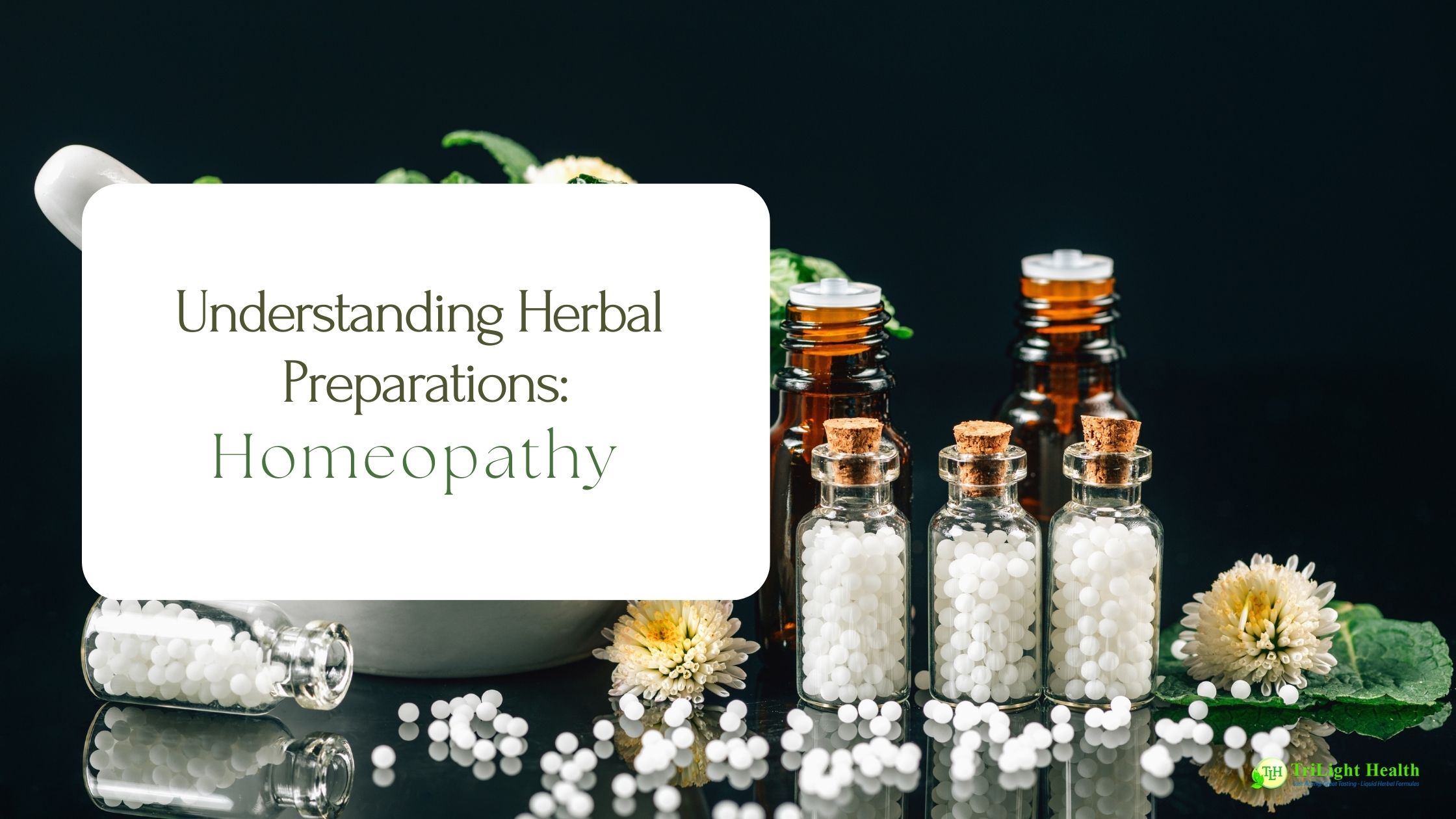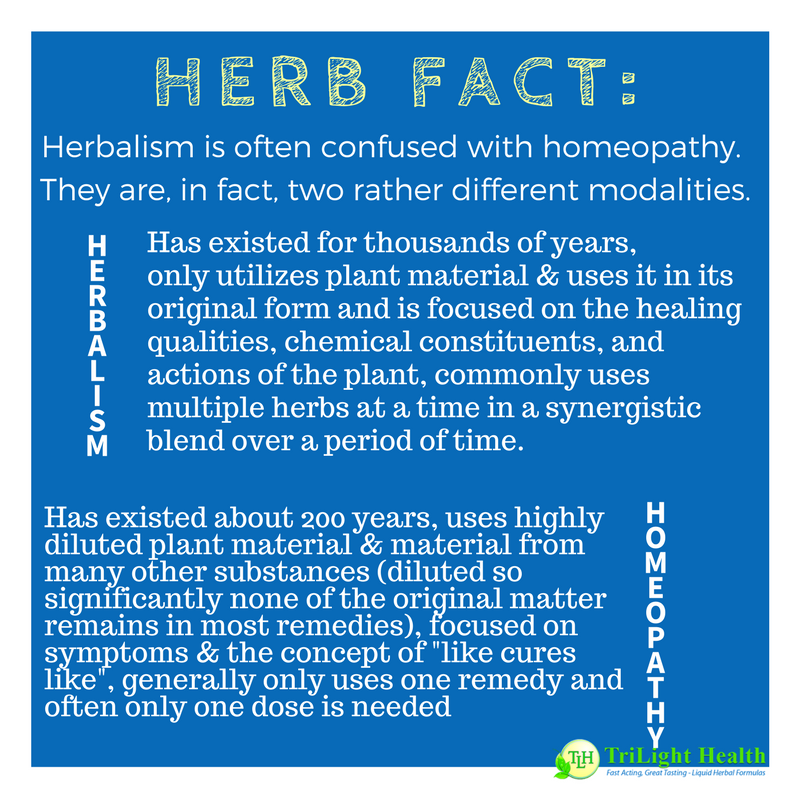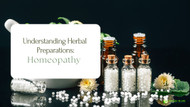Understand Herbal Preparations: Homeopathy
Posted by TriLight Health on Aug 1st 2023
Homeopathy might be the most misused word in natural/alternative medicine. Often folks refer to anything natural/herbal as a "homeopathic" treatment. For something to be truly homeopathic, it must follow certain rules of preparation as well as dosage. Today we hope to introduce you to the branch of medicine known as homeopathy. There is significantly more to this method than we can cover here. We encourage you to do your own research if you're interested in learning more.

What is homeopathy?
This method uses highly diluted and specifically prepared plant, mineral, and animal materials. There are thousands of remedies with more added every day. While not necessarily a branch of herbalism, herbal materials are used in these preparations. It is based on the premise that “like cures like.” The little blue and green tubes you see at the health food store are homeopathic remedies. This approach was created by Dr. Samuel Hahnemann, a German doctor, in the late 1700s.
How are these remedies used?
Dr. Hahnemann's original method of use is known as Classical Homeopathy. In this method one remedy is given at a time. The remedy is meticulously selected based on the totality of an individual's symptoms. Symptoms that may be overlooked in Western Medicine are considered carefully. These include things like the side of the body the symptom is on, emotional state, type of pain, and what makes a symptom better or worse. The color of a person's tongue, the pallor of their skin, and even the way they smell.
One dose is given and time allowed to see how it works. Homeopathic remedies work first on mental/emotional symptoms and then on physical symptoms. A second dose is only given if symptoms return. If symptoms change, a different remedy may be needed, or more time may be given. If nothing appears to happen then a different remedy may be chosen.
There are other "schools of thought" regarding use of remedies as well. Classical is the most widely used.
How are they made?
A small amount of the substance is diluted in a specific ratio with either water, milk, or alcohol. The substance is further diluted in a process known as succession. Remedies come in several "doses"- known as potencies, the most common being X, C, and M. These correspond to Roman numbers. X potencies are diluted at a 1:10 ratio, C at a 1:100 and M at a 1:1000. So a 6X remedy will be diluted 1:10 six times. Unlike most medicines, in homeopathy the higher the potency the more intense action a remedy is likely to have. Most folks use 6C or 30C for acute illnesses, 200C in emergencies, and anything M or higher for use with a professional.
Who can use these remedies?
As stated above, you can find these remedies at most local health food stores. Even some box stores and pharmacies sell a handful of some of the most commonly used remedies. Anyone can use them for acute illnesses as they take time to research the best fitting remedy for the acute. Chronic illnesses should be treated by a Classical Homeopath, Naturopath, or another practioner trained in this method. You'll even find a growing number of Family Practice doctors who are studying Classical Homeopathy to use with their patients. There are even some hospitals using a few remedies!
We hope you've enjoyed learning more. As always, check with your healthcare provider before beginning anything new. Be aware your healthcare provider may not know much about this method so you may need to come prepared with a bit of information for them.

Learn More





